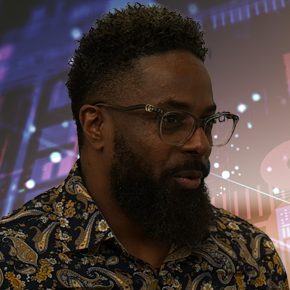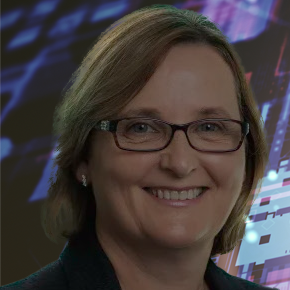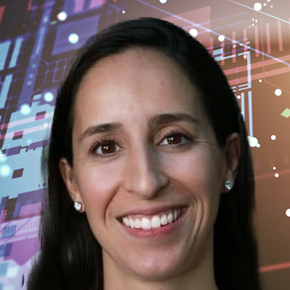
Transcript
Model Based Definition (MBD) Transforms the Product Design Process
Model-Based Definition or MBD can fundamentally transform how we visualize and understand design intent, by adding new dimensions to 2D drawings and pushing the boundaries of 3D CAD models.
The challenge is that without the tools to help you quickly shift to a MBD model, you could be stuck going round and round with your stakeholders in the validation loop of doom.
To show how to get your organization to realize the benefits of MBD, I spoke to Myon Caruthers, leader of research and development of digital transformation tools at the aerospace contractor Honeywell. As a PTC user, Myon Caruthers can share from personal experience the intricate web of the MBD model – how it’s bringing in GD&T (Geometric Dimensioning and Tolerancing), tolerance analysis, annotations, and even the PMI (Product Manufacturing Information) into the 3D CAD space.
I caught up with Myron Caruthers at PTC Liveworx, where this year PTC and aPriori announced a high-level partnership to make it easy for designers working CREO and Solidworks to access cost and carbon annotations, automate workflows, and make the product lifecycle more streamlined, efficient and sustainable.
I started by asking Myron Caruthers about the developments in CAD software that he’s most excited about when it comes to MBD.
Myon Caruthers: Personally, I’m very excited and interested in analysis tools that help to understand manufacturability to help support the manufacturing strategy of our products.
Leah Archibald: Tell me about your role at Honeywell. What challenges are you facing right now?
Model Based Definition Leverages Data to Do Business Better
Myon Caruthers: So my role at Honeywell is primarily around research and development of software technology tools to help with this digital transformation. There’s a lot of energy and interest in model-based definition, and not just authoring or creating the model-based definition, but annotating how we consume that model based definition downstream to help support our business processes, to help support manufacturing processes, to help support quality throughout the product lifecycle, so that we can realize higher quality, faster, cheaper, and better. That’s where my focus and emphasis is at Honeywell, to understand how we can leverage data packages and automation to do business better.
Leah Archibald: How are you making the engineering change within your organization — getting everyone on the same page with MBD?
Myon Caruthers: We’re making some very good progress with the model based definition piece of the design process. There are some challenges as far as adoption and validation. There is a big culture shift that I think many of us are facing. We’ve done engineering and design in the traditional fashion for decades. Digital product definition is a new paradigm. Leveraging technology within the product development process requires another skillset. It requires a fresh approach to how we do engineering, how we do business, and how we leverage data to inform our decisions. We’re making progress, especially in new products, but getting all stakeholders to adopt new workflows is a challenge.
Our success comes from becoming a model-based enterprise. It’s not just about the right PLM, It’s about putting energy towards defining the processes and training the people so that they can adopt the technology and be a part of the process to make our business better.
Leah Archibald: This is what I’m hearing from the VP’s There are two parts. There are the tools, and then there are the people.
Myon Caruthers: Absolutely.
Leah Archibald: I want to ask you about both of them. From the people standpoint, how do you get your teams on board with using the digital twin to streamline engineering changes throughout the product lifecycle?
Engage the End User in a MBD Effort
Myon Caruthers: I think the key is to actually engage the end user. What product data does the end user need to make their job easier? We can’t succeed with the technology without our stakeholders. You know, folks like myself and our team are convinced that model based definition boosts reuse, reduced rework, and drives success. But we’re not the ones that need to be convinced. It’s the ones that are actually down in the trenches doing the work, already involved in the well-defined business processes and activities. I think the key to success is engaging those folks, understanding where their pain points are, understanding the inputs and outputs necessary to do their job, and then allowing them to contribute to the design process of the technical solution. The only way to guarantee adoption — to initiate a culture shift — is getting the users ready to employ these new technologies and techniques in their design process. For that, we need to really understand what they need from PLM and configure the digital solution to what they need.
Leah Archibald: You almost have to be kind of an internal salesman of the process.
Myon Caruthers: Yes. And in that kind of internal selling, you have to be savvy enough to deliver enough validation so the users are pretty much selling it to themselves. The end users are fully intimate with what their challenges are. So I think a part of the adoption — or facilitating that adoption — is really tuning in to where the heartache is and delivering the right information or automation to filling in the areas where they’re already feeling the pain points.
Leah Archibald: What is that pain point? What is the heartburn that your end users are feeling right now?
MBD Solves DFM
Myon Caruthers: Specifically the area that I’m leaning into is design for manufacturability, or DFM. Design for manufacturability is the whole idea of informing design decisions during the design process. With DFM, you’re not trying to discover or address manufacturability after a design is released, but during product development. That’s a big pain point for us — engineering change orders, and other hiccups that slow down the design process. We want to take advantage of tools that allow us to validate the design, understand where the implications for manufacturing bottlenecks or issues may occur, and then use that information to enhance the design and the manufacturing process before the product is released.
That’s probably one of the main biggest examples I could give you for a pain point in the product design lifecycle that we’re trying to solve. There is a lot of angst on the manufacturing floor where we have too tight of tolerance or we have tool accessibility issues and other things that we don’t discover until we get in production. Production is not when you want to discover conflicts between manufacturability and design intent. You want to understand what those impacts and implications are early on. So I would say that’s one of the issues that we’re trying to address with technology and innovation.
Leah Archibald: Tell me about the tools. We talked about the people aspect. Let’s talk about technology What are the tools that you’re using for DFM and MBD?
Myon Caruthers: Tools like aPriori where you can leverage the 3D CAD model, where you can include all the geometric dimensioning and tolerancing in the digital thread — that preserves design intent throughout the product lifecycle and streamlines information to key stakeholders. Also, when all the product manufacturing information is there in the 3D CAD model, you can use these types of tools to interrogate the model, compare geometric dimensioning and tolerances against a set of manufacturing constraints and parameters to get immediate feedback on DFM.
Leah Archibald: And then once you’ve got the MBD initiative set up, it becomes even easier to hit you targets with each design.
Myon Caruthers: Absolutely. When you have more data-rich models, where you have surface finish, where you have GD&T, where you have material science data all baked into the model, and then you have tools that can validate that model, against your manufacturing constraints, it’s just a game changer for product development.
Leah Archibald: Very exciting. Thank you so much for talking to me today.
Myon Caruthers: Thank you.





